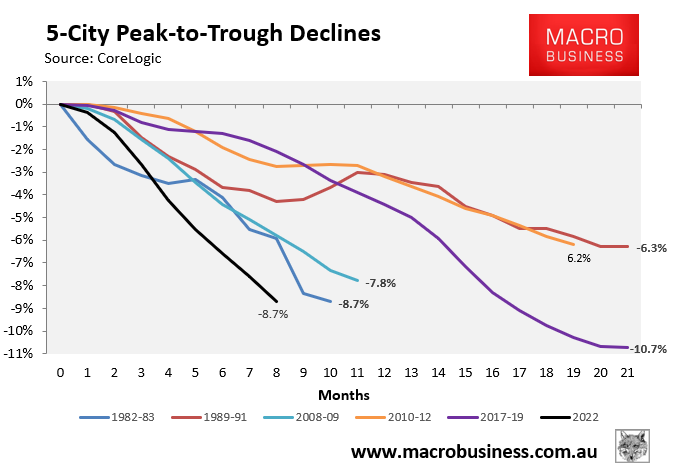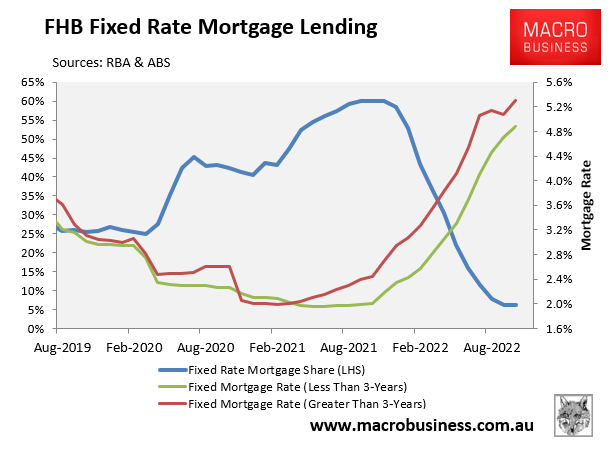According to the CoreLogic daily dwelling values index, home values across the five major capital city markets had fallen 8.7% below their April 2022 peak at the end of December. This is the fastest pace of decline on record and the equal second largest fall behind the 2017-19 correction:

One of the big unknowns in 2023 is the extent to which forced sales will drive property prices lower.
As explained previously, the share of Australian home buyers that took out fixed rate mortgages surged over the pandemic from a long-term average of around 15% to an all-time high 46% in mid-2021:

Nearly one-in-four mortgages (by value) will switch in 2023 from ultra-low fixed rates to rates that are double these levels:

The situation is especially concerning for first home buyers (FHB) given their higher share of fixed rate lending. At the peak in 2022, 60% of FHBs borrowed at fixed rates, up from an historical average of 25%:

The Australian’s David Rogers warns that Australia’s fixed rate mortgage cliff could “crush property prices in 2023” by “magnify[ing] the impact of Australia’s fastest-ever increase in interest rates”.
Rogers explains that “the value of Australia’s home loan market is around $2.1 trillion. About 35%, or $735 billion, of that total were fixed rate mortgages, as of early October, according to the Reserve Bank. And around 65%, or $478 billion of these fixed rate loans were due to expire by the end of 2023”.
“There are few historical precedents for the scale of this fixed rate mortgage cliff”, according to Rogers, and “Australia hasn’t seen anything like it before”.
Rogers also cites AMP Capital’s chief economist, Shane Oliver, who argues the fixed rate cliff is likely to cause a “sharp rise in mortgage stress” that will cause a further weakening in demand and alongside a likely rise in supply as some financially-stressed homeowners are forced to sell.
“This is likely to result in a sharp rise in mortgage stress – particularly as fixed rate loans reset this year”, Dr Oliver said.
Whether distressed sales become a major factor that exerts significant downward pressure on house prices will also depend on the strength of Australia’s labour market.
If unemployment spikes, then homeowners are more likely to struggle to meet their mortgage repayments, resulting in forced sales.
And if the problem becomes widespread enough, then the expected circa 15% correction in Australian house prices could then turn into a full-blown price crash.
Whatever the case, it is shaping up to be an interesting year for the Australian housing market. Pass the popcorn!

